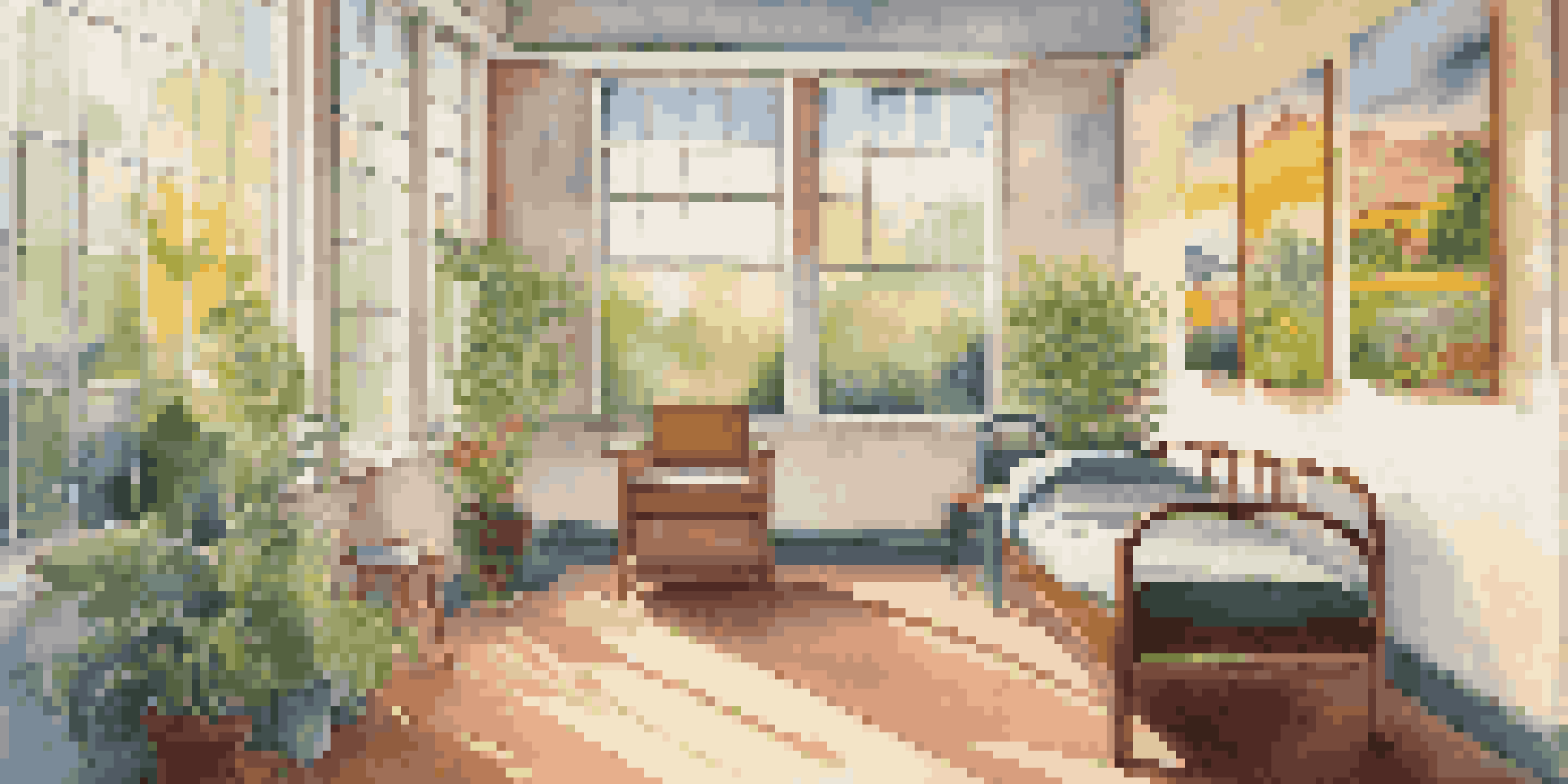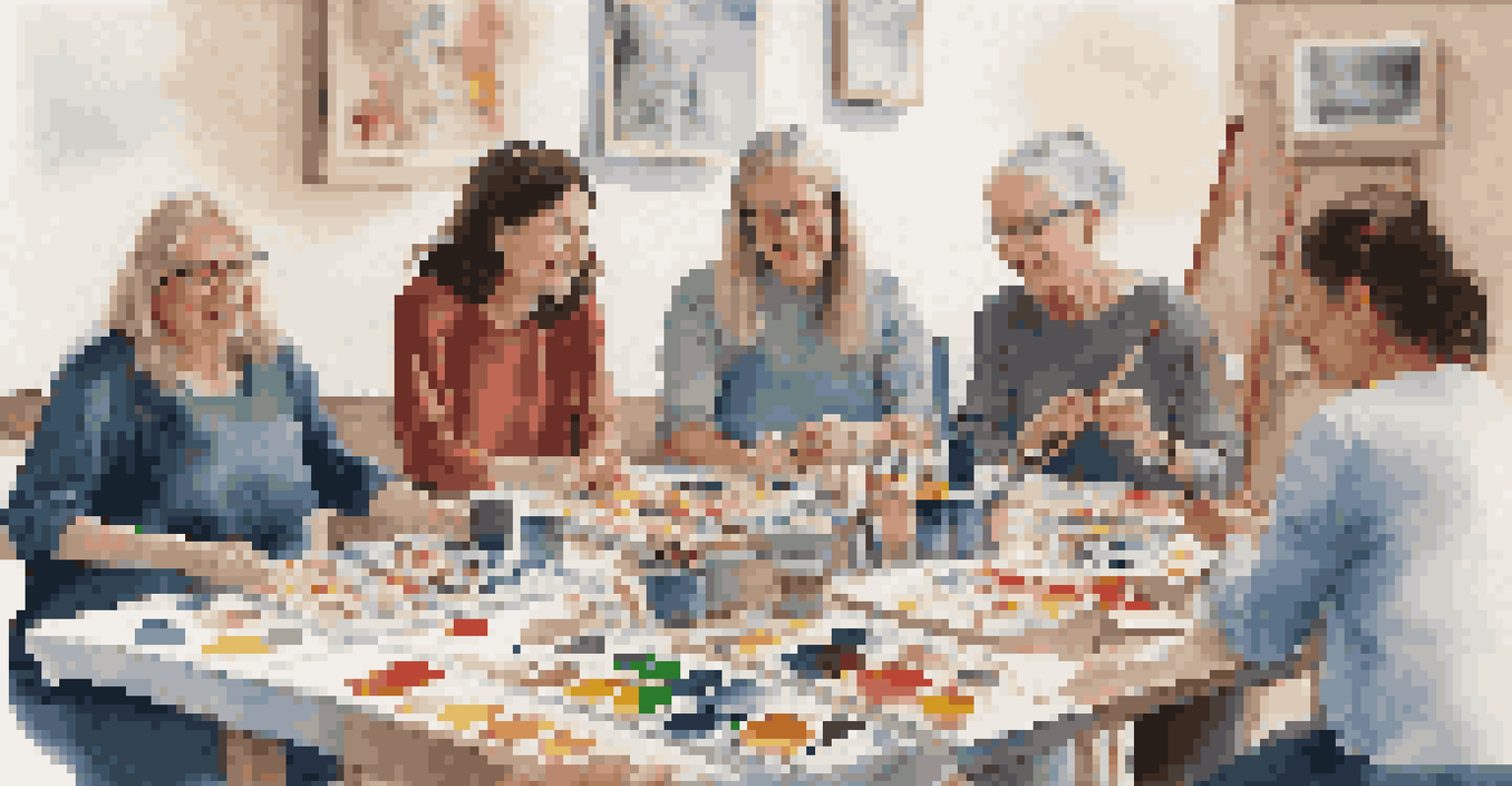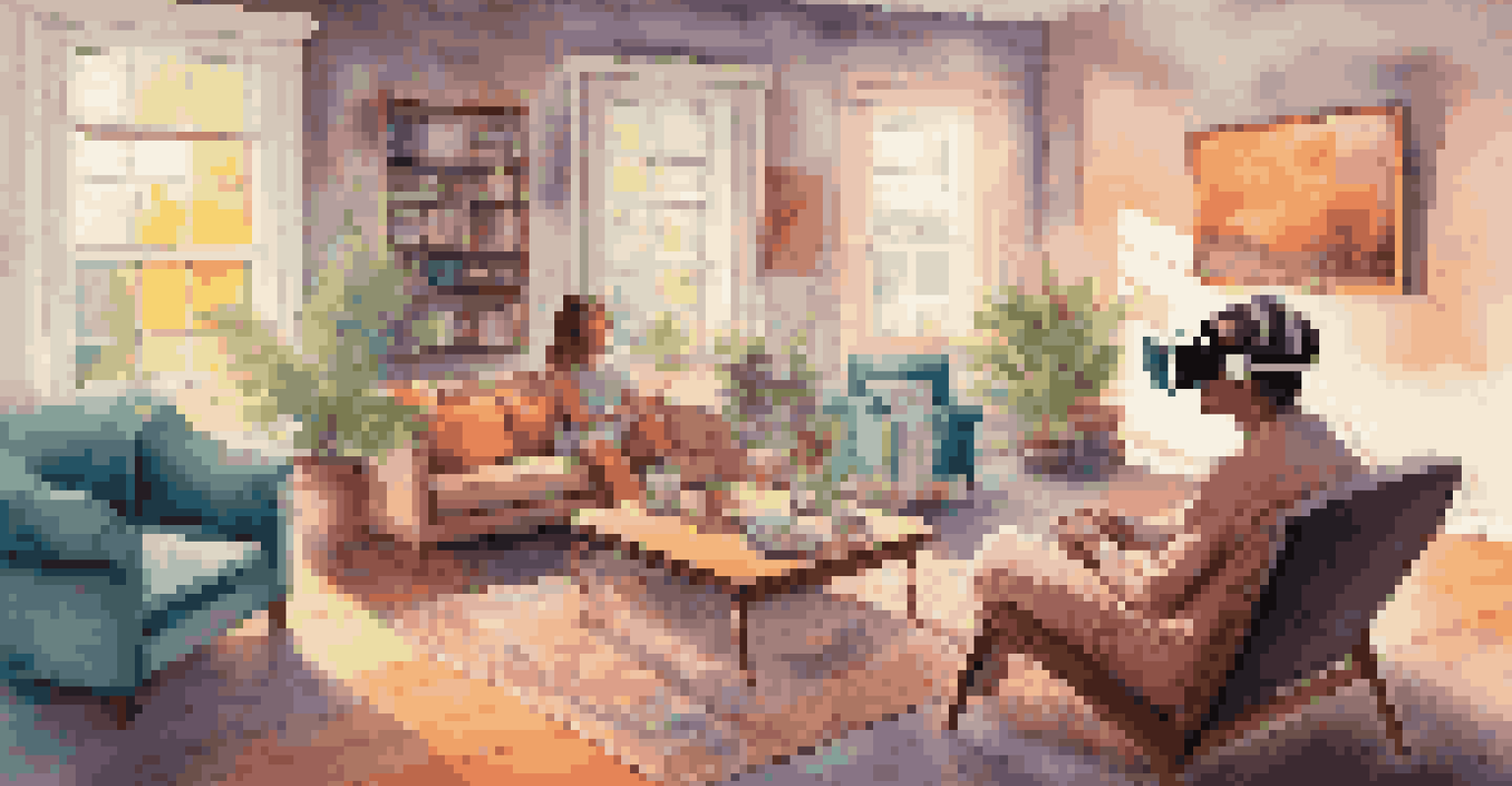Fostering Resilience Through Art in Healthcare Settings

Understanding Resilience and Its Importance in Healthcare
Resilience is the ability to bounce back from challenges and trauma, a crucial quality in healthcare settings. Patients often face overwhelming circumstances, whether it's a chronic illness or recovery from surgery. Building resilience can significantly impact their overall well-being and recovery process. By nurturing this quality, healthcare providers can foster a more supportive environment.
Art is the most beautiful of all lies.
Incorporating resilience into patient care not only aids in healing but also enhances emotional and psychological health. It helps patients develop coping strategies and a positive mindset, allowing them to face their health challenges with strength. This is particularly vital in environments where stress and anxiety can hinder recovery.
Healthcare providers can actively contribute to resilience by creating a culture of support that includes art as a therapeutic tool. Engaging with art can encourage patients to express their feelings, fostering a sense of control and hope. This holistic approach ultimately leads to improved outcomes and satisfaction in healthcare experiences.
The Role of Art in Promoting Healing and Well-being
Art has a unique ability to transcend words, allowing individuals to express emotions that may be difficult to articulate. In healthcare settings, this form of expression can be particularly therapeutic for patients dealing with pain, anxiety, or fear. Whether through painting, music, or sculpture, engaging with art can transform a sterile hospital room into a space of comfort and healing.

Research shows that art therapy can reduce stress and promote relaxation, which are essential for recovery. Patients who participate in artistic activities often report feeling more at ease and connected to their emotions. This connection can be vital in helping them navigate their healthcare journey, enhancing their resilience.
Resilience Enhances Patient Healing
Building resilience in patients significantly impacts their overall well-being and recovery process.
Moreover, art can serve as a powerful distraction from pain and discomfort, providing a mental escape that fosters healing. By incorporating art into patient care, healthcare providers can create an environment that not only addresses physical ailments but also nurtures emotional and psychological health.
How Art Therapy Supports Emotional Resilience
Art therapy is a therapeutic approach that combines the creative process with psychological support. It encourages patients to explore their feelings and thoughts through artistic expression, enabling them to process complex emotions. This can be especially beneficial for those facing serious health challenges, as it offers a safe outlet for expressing fear, sadness, or frustration.
Creativity takes courage.
In a supportive environment, patients can create art that reflects their experiences, helping them to gain insights and foster resilience. For example, a cancer patient might create a piece that represents their journey through treatment, symbolizing both struggle and hope. This process not only aids in emotional healing but also empowers patients by allowing them to take control of their narrative.
Art therapy can also encourage social connection among patients, creating a sense of community and support. When individuals share their artwork and discuss their experiences, they often find common ground, which can alleviate feelings of isolation. This connection can significantly bolster resilience, helping patients to feel less alone in their journeys.
Integrating Art into Healthcare Environments
Integrating art into healthcare settings can be as simple as displaying artwork in waiting rooms or patient rooms. Vibrant colors and inspiring imagery can uplift spirits and create a more welcoming atmosphere. Hospitals and clinics can collaborate with local artists to showcase their work, giving patients a glimpse of creativity and hope.
Beyond visual art, healthcare facilities can also incorporate music therapy, dance, and drama into their programs. These activities can provide patients with new avenues for expression and engagement, promoting both resilience and emotional well-being. Interactive workshops can also be offered, allowing patients to actively participate in the artistic process.
Art Therapy Fosters Emotional Health
Engaging with art allows patients to express complex emotions, promoting healing and enhancing emotional resilience.
Creating designated spaces for artistic activities, such as art studios or music rooms, can further enhance the therapeutic benefits of art in healthcare. Providing patients with access to materials and guidance encourages them to explore their creativity. This empowerment plays a crucial role in building resilience, as patients feel more in control of their healing journey.
The Impact of Art on Caregiver Resilience
While much focus is placed on patients, caregivers also experience stress and emotional challenges in healthcare settings. Engaging with art can offer caregivers a much-needed outlet for their own feelings, promoting resilience in their professional roles. Creative expression can serve as a form of self-care, helping them to recharge emotionally.
Group art activities for caregivers can foster a sense of community and shared experience, allowing them to support one another. These shared moments of creativity can strengthen bonds and promote collaboration, which is vital in high-stress healthcare environments. By nurturing caregiver resilience, healthcare systems can improve overall patient care.
Moreover, art can also serve as a reminder of the beauty in the human experience, even amidst challenges. For caregivers, participating in artistic activities can reignite their passion for their work, reminding them of the positive impact they have on patients' lives. This renewed perspective can enhance their resilience and effectiveness in providing care.
Case Studies: Successful Art Programs in Healthcare
Numerous healthcare facilities have successfully implemented art programs that demonstrate the positive effects of creativity on resilience. For instance, a children's hospital may offer art therapy sessions where young patients can create their own masterpieces, fostering both joy and emotional expression. These programs have been shown to reduce anxiety and improve the overall hospital experience for young patients.
Another example is a community hospital that partnered with local artists to create murals in patient rooms. Patients reported feeling more relaxed and inspired in spaces adorned with colorful, uplifting artwork. This simple yet impactful change has led to increased patient satisfaction and a more positive atmosphere within the hospital.
Caregivers Benefit from Creative Outlets
Art activities provide caregivers with essential emotional support, helping them to recharge and improve patient care.
These case studies highlight the potential of art to transform healthcare environments and improve patient outcomes. By investing in creative programs, healthcare facilities can cultivate resilience not only among patients but also within the entire healthcare community.
The Future of Art in Healthcare: Trends and Innovations
As the importance of holistic care continues to grow, the integration of art in healthcare is becoming more prominent. Innovations in technology, such as virtual reality art experiences, are opening new avenues for creative expression. These advancements can provide patients with immersive experiences that promote relaxation and emotional healing.
Telehealth platforms are also beginning to incorporate art therapy sessions, making it accessible to patients from the comfort of their homes. This shift allows for greater participation and flexibility, particularly for those who may have mobility issues or live in remote areas. The convenience of virtual art therapy can significantly impact patients' resilience and overall well-being.

Looking ahead, we can expect to see even more creative collaborations between artists and healthcare professionals. By continuing to prioritize art in healthcare, we can create environments that foster resilience and healing for patients and caregivers alike. The future is bright for the integration of art and medicine, as we recognize the profound impact creativity can have on health.